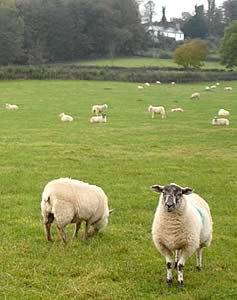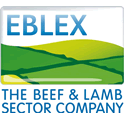| 2009-11-09
Lamb producers should build on the experience of two years of orderly store stock marketing if they are to enjoy another spring and early summer of market predictability, recommends EBLEX, the industry body for beef and lamb levy-payers in England.
Unlike the disastrous spring market of 2007, heavily influenced by a glut of late-finished store lambs, the past two seasons have seen a welcome return to stability in monthly marketings with notably fewer lambs slaughtered in April and May. As well as very much more attractive overall price levels courtesy of the increasingly favourable sterling:euro exchange rate, this has resulted in a far more reliable pattern of seasonal lamb returns.
In 2007 May lamb carcase prices were actually below their January to June average, for instance, whereas in 2008 and 2009 they were between 6% and 16% up on the six month figure, with both years seeing the market building steadily from January to a pronounced peak in late spring and early summer. In marked contrast to 2007, this provided much-needed rewards for the extra costs involved in early lamb production.
In the light of this experience, EBLEX strongly advises producers to appreciate that, whatever the absolute market level, holding on to large numbers of store lambs until late in the New Year in the hope of improved prices will almost inevitably be self-defeating. Not least given the poorer prices invariably paid for heavy lambs and the higher feeding costs incurred.
In addition to planning their finishing carefully to match available feed stocks and marketing store lambs as soon as they are ready, it recommends:
- Spreading the finishing period to maintain income flow and minimise the risk of short- term market fluctuations by buying different types and weights of stock;
- Weighing all lambs on arrival and grouping them for short, medium or long-keep finishing by weight and condition;
- Assessing lamb health on arrival and following a clear health plan to keep mortality rates down to 2% or less through good husbandry;
- Making the best possible use of home-grown forage or arable by-products, introducing concentrates carefully as bulk feed stocks decline and before growth rates suffer;
- Crutching lambs prior to grazing and only presenting clean stock for slaughter; and,
- Selecting lambs carefully for slaughter so they meet key market requirements (E,U or R carcases of fat class 2-3L at 17-21kg for the UK and 12-19kg for export);
Further information on making the most of store lambs on different regimes with targets for initial selection, weight gains and finishing periods is set out in individual Lamb Action for Profit fact sheets available free of charge to English levy payers at www.eblex.org.uk
 National Beef Calf Decline Accelerates National Beef Calf Decline Accelerates
 EBLEX Warns Producers Against Selling Under-Finished Cattle EBLEX Warns Producers Against Selling Under-Finished Cattle
 Improving Ewe Conception Rate to Boost Margins Improving Ewe Conception Rate to Boost Margins
|



